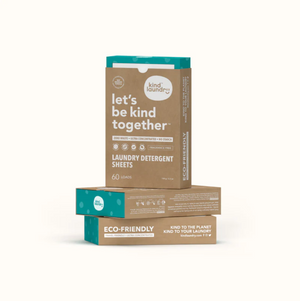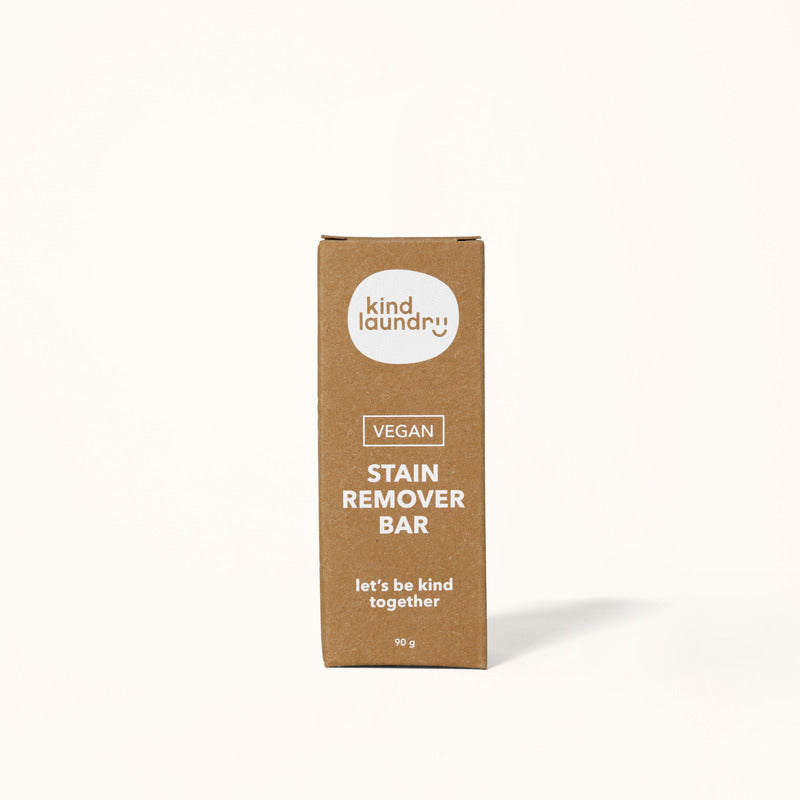Humans are addicted to the next big trend, and the fashion industry has taken note, producing over 100 billion items of clothing each year to keep up with the ever changing demand.
The fashion industry is quite literally banking on you changing your mind. Where once clothing was lovingly hand stitched by atelier vistas and crafted to be passed down through generations, it is now made predominantly of low-cost synthetic blends, more commonly put together by machines and not built to last for more than the current fashion season.
Does Mother Earth care about what outfit we choose to go to work in each morning? Probably not. She’s more of a non-judgmental type. What she does care about, as should you, is where the materials come from, how they were sourced and produced, and whether they were built to last and honor the natural resources that made them.
What is Fast Fashion?
Fast fashion has become a ubiquitous term in recent years, thanks in large part to the rise of e-commerce reinforced by social media. The term “fast fashion” is used to describe the rapid and constant production, distribution, and consumption of clothing. The evolution of the industry means the focus has shifted from high-quality materials and fabrication to appeasing consumers who demand trendy and affordable clothing at a quick pace.
But where did this term originate, and what does it really mean? The term fast fashion dates back to the early 2000s, when retailers began to adopt a business model that emphasized quick turnover of trendy, affordable clothing.
The idea was to capitalize on emerging trends and speed up the production process so that new styles could hit store shelves in a matter of weeks rather than months. This meant using practices and raw materials that have had profound knock-on environmental, social, and ethical impacts.
The Dark Side of Fast Fashion
The fashion industry is often seen as glamorous, but there's a much darker side to our everyday consumer choices that isn't always visible. From unsustainable production methods and materials to human rights violations, the fashion industry has a long history of exploiting people and the planet.
As the pandemic picked up in 2020, not only did clothing sales not slow down, many brands found ways to make it easier for consumers to purchase. Cue those ads that you see on social media with links that go to foreign drop shippers. That’s right, that price tag and picture that pull you in like a tractor beam is likely smoke and mirrors with a sweatshop, synthetic fibers, and poverty behind their facade.
In 2021, fast fashion brand Shein was everywhere you were online. They cracked a code that big box retailers were still working on. Where big brands like H&M and Zara use tracking trends to produce “of the minute” designs over a 3-week turnaround, Shein was able to use real-time data to cut this process to 5–7 days and produce 700-1000 new designs daily. Fast fashion at its finest (or worst). The result? The company generates 10 billion dollars annually, comprised of synthetic materials, plastic packaging, and no promises about clothing disintegrating into microplastic particles after the first few washes.
The materials Shein shed microplastics but don’t break down in the landfill like organic materials do, leading the Better Business Bureau to give them an F-rating. They are just one of many brands contributing to a textile waste crisis that, left unchecked, will continue to cause the depletion of non-renewable sources, emission of greenhouse gasses, and the use of massive amounts of water in production, straining our already fragile natural resources.
Fashion’s Environmental Impact

Water Consumption of the Fashion Industry
The fashion industry uses 79 trillion liters of water each year. In 2015 this was enough to fill 32 million Olympic-sized pools. This statistic is especially concerning when you factor in that 2.7 billion people currently experience water scarcity, begging the question, is our fashion worth it?
As one of the biggest contributors to fast fashion production, Bangladesh uses 1,500 billion liters of water annually in garment factories and mills. This depletes the region’s already dwindling groundwater resources while transporting harmful contaminants to nearby waterways and food crops.
To put the sheer amount of water that the fashion industry uses as a whole into perspective, it takes 7,000 liters of water to produce one pair of jeans and 2,700 liters of water to make the average cotton t-shirt (enough drinking water for one person for 900 days).
How is it possible to use that much water for one article of clothing? To start most clothing starts with cotton. In fact, 60% of all US-produced retail apparel uses cotton as a fiber. Cotton crops require a staggering 7000 to 29,000 liters of water to produce just one kilo of raw fibers. After being harvested, it is spun, dyed, and finished, with its own water footprint, before being finally made into apparel. The solution? If the fashion industry should lean into organic cotton, which uses 91% less ‘blue’ water – that from groundwater and surface-water bodies, such as freshwater lakes and rivers, than conventional cotton.

Water Pollution Caused by Fast Fashion
The fashion industry as a whole contributes to 20% of global wastewater. These “textile effluents” are heavily contaminated with pollutants like dyes, dissolved solids (detergents), suspended solids (salt), and toxic metals.
The effluents are a major source of water pollution because contaminants present in the wastewater undergo chemical and biological changes as they travel through ecosystems. They consume dissolved oxygen, transform, and can become highly toxic, destroying aquatic life and posing a threat to human health.
Not only do these contaminants easily make their way through water systems, polluting soil, and vegetation, but they also make their way into our digestion systems. The textile finishing and dying process release contaminants like oils, phenols, dyes, pesticides, and heavy metals like copper, mercury, and chromium into nearby streams and groundwater. These toxic chemical compounds are then sucked up through root systems from food crops, therefore contaminating food sources with carcinogenic chemicals. Further magnifying the problem is that many of these clothing factories are in third-world countries with no way to measure the pollutants in their everyday food sources and no choice but to eat contaminated food.

Waste Problem of the Fashion Industry
The constant turnover of clothing due to changing trends and cheaply made goods leads to vast amounts of waste that are rapidly filling landfills. The 92 million tons of clothes-related waste each year is responsible for overfilling landfills. To tell you how jarring this figure is, that number is equivalent to approximately 81.5 pounds of textile waste per person per year and around 2,150 pieces of fast fashion thrown out per second countrywide. Exacerbating the issue is that the prominent synthetic fibers in fast fashion don’t readily break down, meaning once they hit the landfill, they are there to stay for 20 to 200 years.
This is a new problem. In the past 15 years, the number of times an article is worn has been reduced by 36%. The fast fashion industry is one of demand. Fashion waste is a consumer problem as much as it is an industry problem. It is social constructs (more, newer, fresher) driven by things like social media resulting in environmental damage at an alarming rate.
To combat this, the fast fashion industry needs to pivot towards more durable processes and materials, which will allow for increased wearability and reduce overall textile waste.
Microfibers Pollution
The waste from the fashion industry generates half a million tons of microplastics annually, most of which will find their way to our ecosystems, waterways, and oceans. And even our food systems.
When you buy fast fashion, you are also unknowingly buying microfibers - fashion's tiny hidden secret. Every time an article of clothing is washed and subjected to harsh detergents, rigorous agitation in the washer, and heat in the dryer, the fibers of the fabric break apart. Each cycle, they shed more and more tiny plastic fibers (microfibers), which are a form of microplastics. These then go out of your washer and into the water system, or collect your dryer and then blow into your home's ventilation.
Big facts are important to see the tiny problem. Laundry may seem like a benevolent task, but doing a load contributes to half a million tonnes of microplastics being released into the ocean every year. This equates to almost three billion polyester shirts. The effects of microplastic ingestion on marine life can be catastrophic.
Animals who ingest these micropollutants experience starvation, endocrine disruption, degradation of digestion systems, and stunted growth in some species. Doesn’t concern you? It does if you are a participant in the food system, which we all are. The end result is that we eat these animals, directly or indirectly, as they are used as food stock for other animals. Marine life health is human health.

Chemicals in Clothes
The chemicals and dyes used in textile production can have long-lasting environmental impacts that harm both people and wildlife. Dyes, processing agents, and detergents end up in our ecosystems, causing massive biological disruption to humans and animals.
Chemical pollution from the fashion industry is nothing new, if a bit more synthetic than it used to be hundreds of years ago. A British newspaper from 1833 described the foul conditions of the ‘Black Ditch’ at Pendleton, which overflowed with over a meter of mud contaminated with "waste dye stuff and filth," making it impassable. Alarmed, the British government introduced legislation to control pollution, recognizing the link between poor health, environmental damage, and pollution, but in the end, turned a blind eye, accepting these risks as a necessary price of industrial development.
Today it’s not much different. There is a tacit acknowledgment of the detrimental effects to the surrounding environment, but in second and third-world countries whose economies are driven by fast money, the environment is second to profit.
Greenhouse Gases Emissions of the Fashion Industry
Greenhouse gasses are a crucial environmental concern in the industrial sector. These gasses trap heat within the Earth's atmosphere, leading to a rise in global temperatures and other negative effects like extreme weather changes and rising sea levels. Carbon dioxide, methane, and nitrous oxide are some common greenhouse gasses emitted by industrial activities such as manufacturing, transportation, and power generation.
Greenhouse gas emissions (GHGs) are a major concern within all industries. However, according to the Global Impact Study “Measuring Fashion,” the fashion industry’s carbon emissions are on track to double by 2030, making them a key target for global reduction.
Where do the fashion industry's GHGs come from? Quite literally every step of the way from seed to your shopping bag. GHG emissions start with growing and harvesting textile crops. This requires machinery which burns fossil fuels. The crops then head out for manufacturing, where transportation of raw goods and their resultant articles of clothing contribute to carbon dioxide, methane, and other harmful gasses. The production process then creates more GHGs through heavy equipment use. The afterlife of your garment contributes to GHGs as well. After a garment is worn and disposed of, it goes on to create gasses while breaking down in the landfill.
From the production of textile materials to the disposal of garments, each supply chain step produces emissions that can have lasting environmental consequences. It is essential that the fast fashion industry takes responsibility for reducing its carbon footprint and implements sustainable practices to combat greenhouse gas emissions at every step of the way to reduce emissions.

Soil Degradation
The fashion industry is first and foremost worried about volume and less by the results of churning out low-quality goods around the clock. The effect on soil from fast fashion is twofold. It happens at the source of the fibers and also in production.
Growing cotton crops results in a vast amount of pesticides, herbicides, and fertilizers that rob the soil of essential nutrients. Crops are also turned over quickly without giving the soil time to regenerate. This practice leads to a reduction in soil quality and the inevitable degradation of connected ecosystems.
In production, textile effluents leave the factory through the water system and carry on through the ecosystem littering chemicals and undissolved solids that turn into carcinogens along the way.
To combat this, governments need to develop policies around mandating filtration systems in factories. Regulations, penalties, and taxation can go a long way in convincing the fast fashion industry to adjust course and reprioritize with the environment in mind.

Rainforest Destruction Caused by Fast Fashion
The fast fashion industry heavily relies on materials like cotton and viscose rayon, often blending them with synthetics. Both of these materials contribute to rainforest destruction in a big way. These fabrics are typically made from wood pulp, which comes from trees that are often illegally harvested from rainforests.
The destruction of these vital ecosystems not only devastates wildlife habitats but also greatly impacts the indigenous communities who rely on these forests for their livelihoods. Instead, fashion companies should opt to work with sustainably managed forests and do so in a legal and ethical way that ensures regenerative practices.
Working Conditions
The result of manufacturers producing clothing at such a rapid pace that corners are cut when it comes to worker safety, conditions, and wages. The fast fashion industry requires around the clock labor, and many companies opt for third-world locations putting profit over people and planet. Workers often endure low wages and poor working conditions. Despite these concerns, fast fashion remains a popular option for many consumers who enjoy the accessibility and affordability of new, trendy clothing.
Child Labour in the Fashion Industry
One of the biggest dark secrets of the fast fashion industry is hidden in third-world factories: child labor. From Bangladesh to India, children as young as five are often forced to work long hours in harsh conditions to keep up with a breakneck pace of production at a fraction of the cost.
This exploitation is a pervasive issue perpetuating the poverty cycle for families who must rely on their children's labor to survive. Despite consumer demand for ethical and sustainable fashion, companies continue to turn a blind eye to the human cost of their production methods. The time has come for the fashion industry to take responsibility and create a safe and equitable environment for all workers, regardless of age.
Working Hours
The fashion industry is notorious for its long working hours. Workers are often expected to put in more than 12 hours a day, sometimes seven days a week, in the biggest factories in China and beyond, where labor rules are not readily enforced.
This results in physical and mental exhaustion, and the lack of proper breaks or time off only adds to the distress. While many of us don't give it a second thought when we slip on a new outfit, it's important to recognize the human cost behind each garment. Companies must be held accountable for the treatment of their factory workers, and consumers must demand ethical and sustainable practices in the industry.
Wages in the Fashion Industry
From haute couture to ready-to-wear collections, the fashion industry is a multi-billion dollar industry that encompasses a myriad of professions, from designers, models, and photographers to producers and stylists. While these positions offer competitive wages, factory labor positions often do not. Many of the clothes we wear are produced in sweatshops where workers are often overworked and underpaid, making it difficult for them to meet their basic needs.
Fast fashion takes advantage of poverty-stricken populations who will accept far below-average wages in a fight for bare survival. At the top end, a US worker in a garment factory makes a monthly minimum wage of $1,660 a month, whereas one in China may make as little as $217 a month. Look for certifications like B Corp or Bluesign that rigorously vet companies for ethical pay practices.
Health and Safety Restrictions
Sadly, the lack of health and safety regulations remains a persistent problem within the fashion industry. To keep up with the fast-paced demands of the fashion world, workers may be forced to work for long hours in hazardous conditions that risk their health and safety. The situation is only worsening as more and more people worldwide demand the latest fashion at lower prices.
Forced Labour in the Fashion Industry
Forced labour in the fashion industry is a widespread issue that many people are unaware of. From children being forced to work in unsafe garment factories to adults working long hours for little pay, this side of the global fashion industry is often hidden from public view. It is in its barest sense, modern-day slavery.
Every year, millions of people are exploited to produce clothes, shoes, and accessories, and the problem only seems to be worsening. As consumers, it's important that we educate ourselves about the reality of forced labour in the fashion industry and actively support brands that prioritize ethical and sustainable practices. By doing so, we can help ensure that every garment we wear is free from the stain of exploitation.

How Can We Reduce the Environmental Impact of Fast Fashion?
Buy Less
Don’t be tempted by the two for one sale; shop only when you need to and always with the environment in mind. In all senses, the earth depends on us to operate in moderation. Be a conscious consumer and only shop when you need to.
Buy Second-Hand
Give clothes a second chance at circularity by diverting them from the landfill into your closet. Buying second-hand means the resources used to fabricate the clothing can stay in circularity and give more value and less environmental impact over time.
Rent Clothes
Platforms like Rent the Runway, are the perfect place to try trends without committing - yielding less textile waste for unwanted purchases in the long run. Return programs reduce a piece of clothes' carbon footprint all around from the consumer to the brand who made it.
Buy Clothes From Sustainable Brands
As we move towards greener habits, it's important that we also start looking at what goes into our closet and make conscious choices to support ethical and sustainable practices. Check in with this great list for certifications that vet companies so you don’t have to. From environmental impact to ethical and social issues, brands undergo rigorous audits before receiving one of these certifications
Buy Better Quality
While the fast fashion industry is certainly doing the heavy lifting in damaging practices, the consumer drives the demand. Ask your favorite brand to carry better, more sustainable materials. Look for organic cotton and natural fibers that come from sustainably managed forests.
Don’t Throw Away Your Clothes
Finally, don’t throw it away. We’ve already pleaded our case about fashion waste, and plenty of ways to divert old clothes from landfill exist. Start by repairing if possible. If that’s a no-go, donate your old clothing to a non-profit or textile recycle bin. The end life of our clothing is just as impactful as its beginning.
Brands like MUD Jeans, Patagonia, Reformation, and VIVAIA all have takeback programs and are taking responsibility for their own carbon footprint.
Buy Waterless Denim
Realizing how much the apparel industry consumes water in operation, many manufacturers have been working toward a greener production process, treading lighter on natural resources. Water stewardship is a priority. Brands like Land’s End and Levis have been experimenting with changing from traditional dying standards to techniques like using lasers to create whiskering effects to reduce the amount of water used in production.
Is Slow Fashion the Solution?
As we become increasingly aware of the devastating impact of the fast fashion industry on the environment, many consumers have turned to the concept of "slow fashion" as a possible solution.
At its core, slow fashion emphasizes creating timeless, durable clothing that is meant to be kept and worn for years rather than quickly falling out of style and ending up in a landfill. By opting for high-quality items that are crafted with sustainable materials and ethical labor practices, slow fashion supporters believe that we can drastically reduce the environmental impact of the clothing industry.
Though it may require a shift in mindset and an investment in higher-priced pieces, many argue that the benefits to both our planet and our closets make it well worth the effort.
























